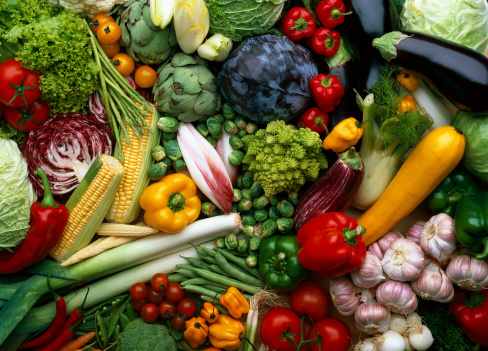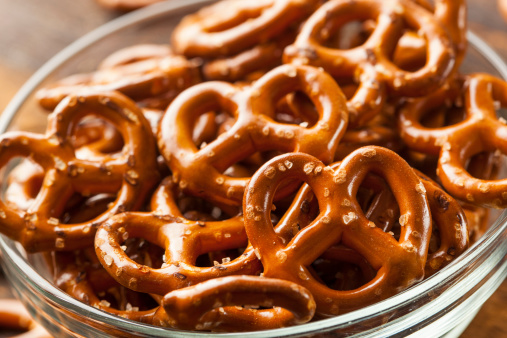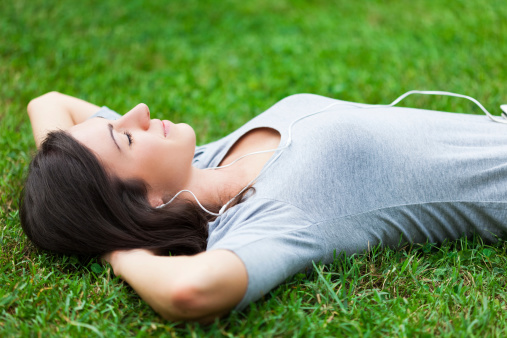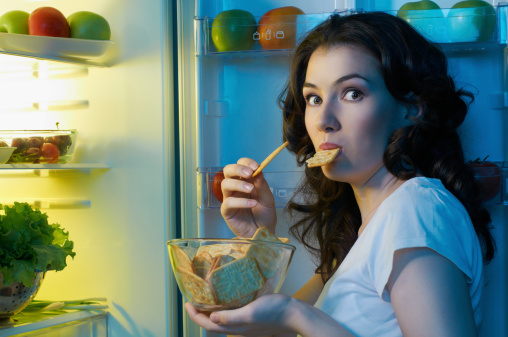The road to weight loss is lined with confusing signs—some tell you to go this way, while others say the opposite. What you need is a roadmap—or better yet, a turn-by-turn GPS—you can trust… like one that comes from an expert, registered dietitian.
Fortunately, at Nutrisystem, they’re all around, developing the products and weight loss programs that help thousands of people reach their weight loss goals. Two of those dietitians talked to The Leaf Weight Loss Blog to offer their own strategies for beating cravings and feeling full, as well as some of their best weight loss tips.
1. Never eat a meal without vegetables.
Dietitian Mandi Knowles says she fills at least half of every plate with vegetables—at every meal.
“Chicken and brown rice on a plate is boring and unappetizing,” she says. “But throw in some beautiful roasted vegetables, and your plate looks like something out of Top Chef. When prepared and seasoned correctly, vegetables are a delicious, flavorful and colorful way to eat a meal.”
And for weight loss purposes, it’s a filling, calorie-saving way to eat: A cup of green roasted vegetables like broccoli, can have fewer than 50 calories and provide you with 20 percent or more of your daily fiber needs. And fiber can help you lose weight—it makes you feel full faster, and then controls the speed of your digestion so that you stay feeling full, longer.
But… even for breakfast? Yes! Adding veggies to your eggs, like in these easy-to-make egg muffins, can help increase the volume of food you eat without adding calories. Or think of a fancy buffet restaurant at a hotel—there’s always fresh cucumbers and tomatoes included in the breakfast spread. Give yourself a taste of that fancy hotel at home, and help yourself lose more weight all day.

2. Don’t trust yourself to eyeball portion sizes.
The super-sized portions at restaurants have given us a skewed view of portion sizes, says dietitian Courtney McCormick.
“Who hasn’t filled at least half—or even more—of their plate with spaghetti for dinner?” she says. “But a serving of pasta or other whole grains should be no more than a quarter of your plate.”
Even if you’re tracking your food intake with an app or food journal, overestimating your portion sizes can sabotage your diet progress and results—so when the jar of peanut butter says a serving of two tablespoons is 180 calories, over-serving yourself by half a tablespoon can increase the calories you’re eating by 25 percent.
McCormick’s solution: Measure your portions—not forever, but for a few days at the start. Doing so will help you “get a better understanding of what those portion sizes look like,” she says. “Once you have these visuals, it will be easier to judge actual portion sizes without having to measure everything.”

3. You’re OK eating after 7 p.m. (or 9 p.m.! or 10 p.m.!)
Wait a second: The quick weight loss rule-book says that you CAN’T eat after 7 p.m. What gives?
“In theory, it makes sense: After dinner is a time when we can aimlessly snack. That’s the real message here,” says Knowles. But if she’s had a long day and gets home after 7 p.m., “I’m not missing my dinner… that’s just impractical.”
Knowles suggests getting the right message from this old “rule”: Pay attention to whether you’re snacking late in the evening because you’re really hungry, or if you’re just in the habit of doing so while you’re watching TV.
Eating in front of the TV can be a real culprit of overeating, because we aren’t concentrating on what we’re consuming, says McCormick. “The more we can be mindful of what we are eating—enjoying the taste, texture, smells of our foods, the more joyful the eating experience will be and the more satisfying the meal will be,” she says. And science backs it up: Mindful eaters in a British study not only ate less during a distraction-free meal, but ate fewer calories the rest of the day. So if you can, don’t eat in front of the tube.
But if you really want to snack while you watch your favorite show, Knowles says to change what you snack on: Choose vegetables to satisfy crunchy cravings instead of salty snacks, and consider fruit instead of sweet snack foods.

4. If you are really, really craving a specific food—you should eat it.
When you feel a craving coming on, both experts say that your first job is to analyze it.
McCormick asks herself this question: “Am I craving something because I am really hungry, or because I am really just bored or stressed?”
If it’s bored and stressed, she says, look for another avenue to fix the problem: “Call a friend to go to the mall, or go to a local park to walk.” Even a short, 10-minute walk can cause a release of dopamine in your body—a biochemical that your body associates with pleasure that’s released when you eat chocolate and other sugary foods.
But if you’re really hungry, and really craving a specific item, a walk won’t do—and neither will a substitute.
“If I am craving something, I am eventually going to eat it,” McCormick says. When you want a chocolate chip cookie, all the pretzels in the world won’t fix the craving—and can result in eating more calories than satisfying the real craving would. “Rather than double up on calories by trying to find alternatives, I just eat what I’m craving but make sure to eat it in a mindful way.”
And that’s mindful both in attention—as mentioned above—and in attention to portion size. “I’d measure out a half-cup of my favorite mint chocolate chip ice cream, rather than fill my largest cereal bowl to the top,” she says. “And I enjoy every moment, taking my time as I eat to savor the smell, texture, and taste of the food.”

5. Skipping meals hurts your weight loss progress.
Skipping a meal might seem like a great way to hit “undo” and “make up” for a day of eating that went off your meal plan, but you can actually hurt your diet progress, Knowles says.
“When you starve or severely restrict calories, your metabolism slows down. Not what you want to do when losing weight,” she says. When your metabolism slows down, your body is burning less energy—fewer calories. So you might eat a little less, but you’ll burn less over the long run. “Eating frequently throughout the day keeps your energy high and metabolism burning.”
Eating every three to four hours can help keep your blood sugar steady, McCormick says, “which can help prevent hunger and cravings. Plus, the longer we go without eating, the hungrier we are by the time we get to our next meal—which may lead to us stuffing our faces,” which could undo the negative calorie balance you set by suffering through a skipped lunch.
Instead, get back on track; one bad meal will not ruin your weight loss meal plan. Every choice you make is another chance to make a good choice that progresses you towards your weight loss goals.

6. 100-calorie packs may be sabotaging your results.
Those 100-calorie packs may seem like a convenient way to snack—and enjoy something sweet—while eating fewer calories. But most are low on protein and fiber, says McCormick, two nutrients that help fill you up and keep you full.
“So while your 100-calorie pack may satisfy that sweet craving in the moment, you may find that you will be reaching for more food—and calories—an hour later,” she says. Save snacks like these for dedicated, craving-crushing snack times. For regular snacks, she says, “opt for nutrient-dense, portable snacks that deliver protein and fiber… peanut butter with apple slices or celery sticks, a banana with a handful of nuts, or hummus with your favorite vegetables.”

7. “Diet” sodas are OK … if you were already using them.
The word on “diet” sodas and other artificial sweeteners has been all bad recently: The trend is to point out that some research has found that these compounds may actually stimulate appetite—especially for sweet foods—and ultimately lead to weight gain. But there’s also research that shows these products helping people to lose weight.
“The jury is still out on this one,” says McCormick. Her advice: “If you used artificial sweeteners prior to starting your weight loss journey, it is probably still OK to enjoy the occasional diet beverage or snack,” she says. But if you didn’t use them before you started trying to lose weight, “I wouldn’t recommend starting to consume a lot of artificial sweeteners now solely to help with weight loss.” Want some help cutting back on soda? We’ve got you covered here.
8. Smaller plates can help you eat less.
Choosing the right sized plate can make all the difference in the amount you eat. Studies suggest that when people are given larger plates, cups or bags of food, they tend to eat more. So stick with smaller plates and take a break after you eat to give your stomach some time to tell your brain whether it’s full or not.
“I only have salad plates in my house because those are the perfect way to keep portions in check,” says Knowles. “Portions sizes have increased over the years and plate sizes have, too. And when eating out, be mindful of the plate size and eyeball what that food would look like on a salad plate. It takes practice, but you can train your eye very easily to judge healthy portion sizes.”